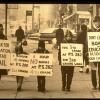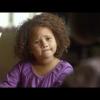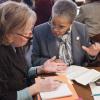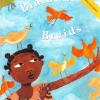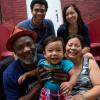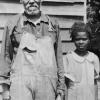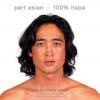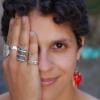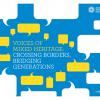Themes: Parents & Children
PHOTOS: Racial Realities and Bed Stuy Memories
Reflections on Critical Mixed Race Studies conference
Congratulations Bronze-Medal Winner and Brooklynite Lia Neal!
Loving Day Flagship Celebration 2012
"Who are your people?"
Bette Yee
"...It was 1956, I was in the first grade, and I still hadn’t spoken any English. We really didn’t have a TV until we were -- until I was like seven or eight years old, and we didn’t even know what other kids had. We just knew that we were different, but we also felt that we were special."
Sonnet Takahisa
“I remember getting in trouble with a substitute teacher...I was looking at the window, and he said, 'You, sit down in your seat. You’re making a bad name for your race.' And I was like, 'Excuse me, but I’m probably the same race as you.'”
Connection between storytelling and identity?
At the Identity & Oral History workshop at the Brooklyn Museum (grounded in the Question Bridge: Black Males exhibit), participants discussed important turning points in our lives and practiced deep listening skills, which inspired reflections on the role of storytelling and listening in our own liv
Harry Schwartzman
"I grew up speaking Yiddish and Japanese, and a lot of people find that exotic and different, and I guess as exotic and different as growing up in New York. To me, it’s normal."
Lenge Hong
"When I would say Eurasian, nobody would know what I was talking about. So I would go I’m half Chinese, and half Scottish - which I actually still do. I went through stages in my life of different emotional reactions to that question: What are you?"
Mixed Kids Are the Cutest!?
When I tell people that I am working on a project about mixed-heritage families, people often respond with something like “Oh, mixed babies are so cute!” or “Mixed-race people are so beautiful!” This is meant to be a compliment - but it's also stereotyping (and objectifying) a large, diverse group of people.
What do you think?
Teresa Ish
"Most people would not even guess that I was half Chinese. It’s really nice for traveling. If I keep my mouth shut, I can kind of fake it almost anywhere. But, you know, obviously once I speak everyone knows I’m American."
The Hapa Project: A multiracial identity art project created by artist Kip Fulbeck
Join a discussion about what it means to be Hapa. Once a derogatory label derived from the Hawaiian word for “half,” Hapa has since been embraced as a term of pride by many whose mixed racial heritage includes Asian or Pacific Island descent.
What Are You? a discussion about mixed heritage
Participate in this discussion about mixed heritage co-sponsored by Loving Day, a global network fighting racial prejudice through education and building multicultural community.
Voices of Mixed Heritage: Crossing Borders, Bridging Generations
Voices of Mixed Heritage: Crossing Borders, Bridging Generations is an interdisciplinary curriculum designed for grades 6–12. We invite students and educators to engage with the topic of mixed heritage and identity in the United States from the mid-19th century to the present.
Pages
- « first
- ‹ previous
- 1
- 2
- 3


